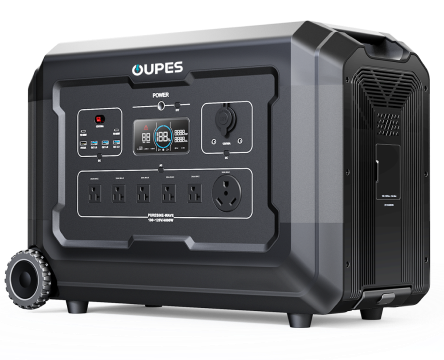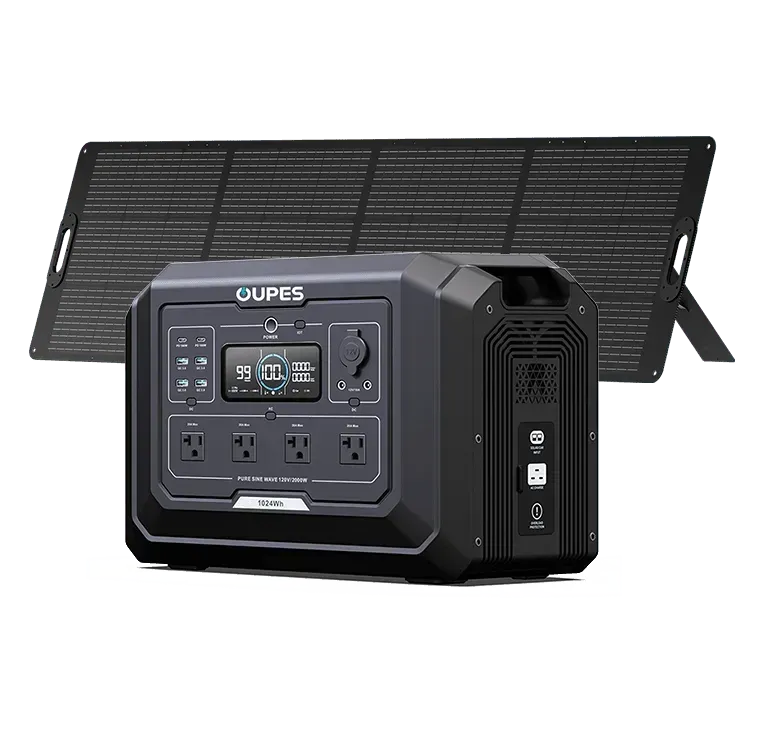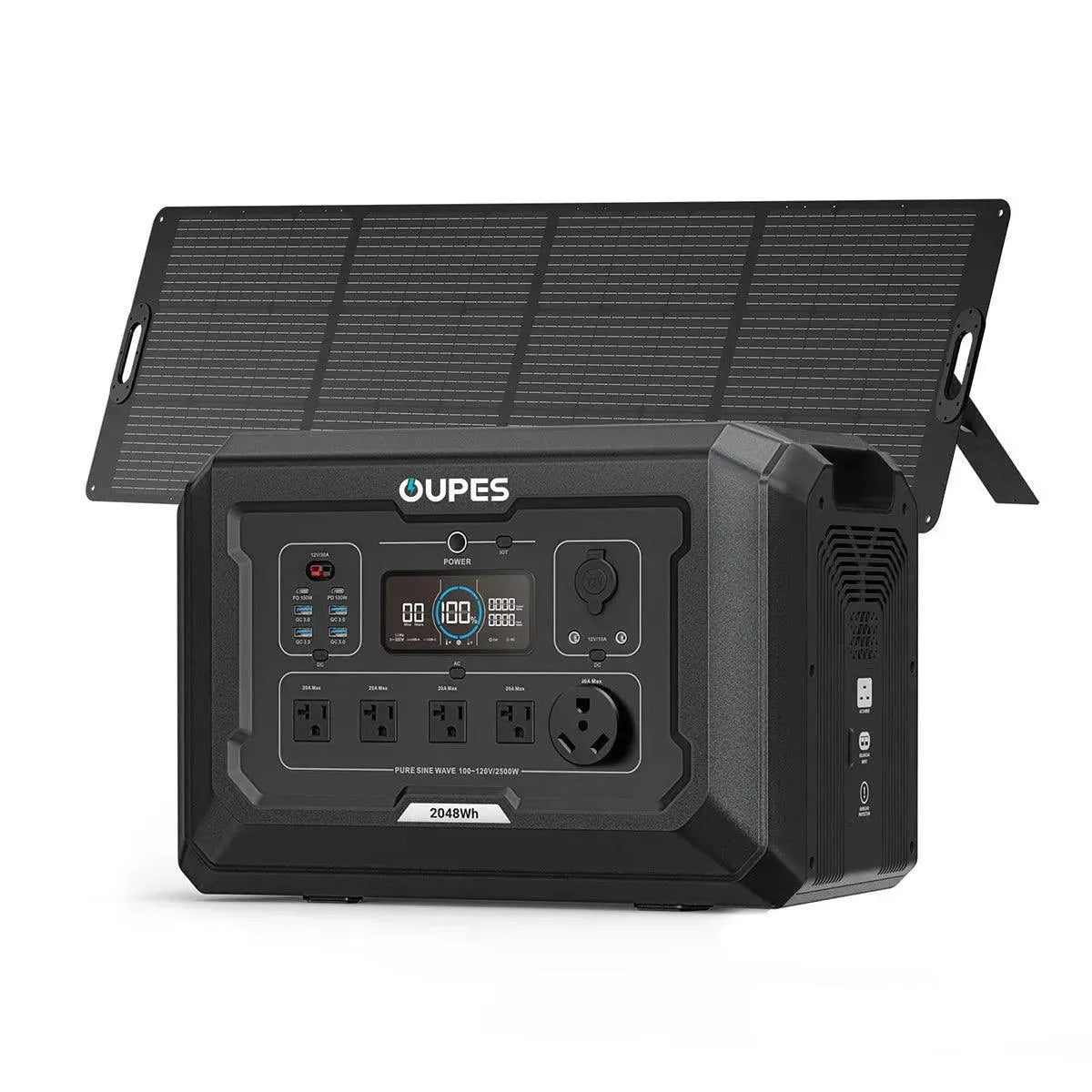
Imagine being caught in a sudden blackout during a storm—no lights, no heating, and dwindling phone battery. Now picture a reliable power generator humming to life, restoring your essential appliances and peace of mind. Whether you're an off-grid adventurer, a homeowner prepping for emergencies, or an eco-conscious consumer, choosing between solar and gas generators is a critical decision. This guide dives deep into both technologies, dissecting their mechanics, costs, and real-world applications to help you harness power your way.
Energy independence isn't just a buzzword; it's a practical necessity in today's unpredictable world. As extreme weather events surge and electricity prices soar, portable power solutions like solar and gas generator kits have transformed from luxury items to essential tools. But which one truly aligns with your needs? We cut through the technical jargon to deliver a clear, actionable comparison—so you can invest confidently in a system that won't let you down when it matters most.
Understanding Power Generator Kits: Core Components and Applications
Power generator kits are self-contained units designed to convert fuel or renewable resources into usable electricity. Gas generators rely on internal combustion engines, typically fueled by gasoline or propane, which spin an alternator to produce alternating current (AC). These systems include engines, fuel tanks, voltage regulators, and outlets. Solar kits, conversely, use photovoltaic panels to capture sunlight, converting it to direct current (DC) that an inverter then transforms into AC. Key components here are solar panels, charge controllers, battery banks for storage, and inverters. While gas generators deliver immediate high-wattage output, solar systems prioritize silent operation and long-term sustainability.
Applications vary dramatically between these technologies. Gas generators excel in high-demand scenarios—think powering refrigerators during outages, running construction tools at remote sites, or supporting medical equipment. Their ability to produce 3,000–10,000 watts makes them indispensable for heavy loads. Solar kits, however, shine in sustained low-to-mid power needs: charging phones and laptops, maintaining RV appliances, or illuminating campsites. With capacities usually ranging from 200–2,000 watts, they're ideal for gradual energy replenishment. Both systems can be expanded via parallel kits, but solar scalability faces practical limits based on sunlight availability and physical space for panels.
When evaluating kits, consider integration complexity. Gas generators demand fuel procurement, engine maintenance (oil changes, air filters), and ventilation for exhaust fumes. Solar requires strategic panel placement—unobstructed southern exposure optimizes efficiency—and battery management to prevent degradation. Hybrid kits now merge both worlds: solar panels trickle-charge batteries while a gas engine kicks in during high consumption. This versatility suits users needing backup redundancy, though cost and complexity increase. Ultimately, your choice hinges on whether immediate power surges or silent, renewable access aligns with your lifestyle.
Solar Generator Kits: Efficiency, Costs, and Environmental Impact
Solar generator kits convert sunlight into electricity through photovoltaic panels, storing energy in lithium-ion or lead-acid batteries for on-demand use. Efficiency hinges on panel quality and sun exposure; premium monocrystalline panels achieve 20–22% efficiency, while polycrystalline variants hover around 15–17%. Battery technology is equally crucial—lithium units offer 2,000–3,000 charge cycles with minimal degradation, outperforming lead-acid's 500–800 cycles. A 100W panel generates 300–500 watt-hours daily in optimal conditions, enough for small devices but insufficient for high-watt appliances like microwaves or air conditioners without substantial scaling.
Cost analysis reveals stark contrasts between upfront and long-term expenses. Entry-level solar kits (e.g., Jackery 300) start at $300, while robust 2kWh systems (Bluetti AC200P) exceed $1,500. Installation adds minimal expense—no permits needed for portable setups—but expanding capacity requires additional panels ($150–$300 each) and batteries ($200–$800). Conversely, gas generators cost less upfront ($400–$1,200 for equivalent output) but incur ongoing fuel expenses. Solar's ROI emerges over 5–7 years: zero fuel costs, tax incentives (like the U.S. federal ITC covering 26% of system costs), and negligible maintenance. Gas units consume $20–$50 in fuel per 24 hours of runtime.
Environmentally, solar dominates. Gas generators emit CO2 (5–18 pounds per gallon of gasoline) and pollutants like nitrogen oxides. Solar produces clean energy once manufactured, though battery disposal poses challenges. Innovations like recyclable lithium batteries and solar panel recycling programs mitigate this. Noise pollution further differentiates them: solar operates silently, while gas generators hit 60–90 decibels—comparable to a lawnmower. For eco-conscious users or noise-sensitive environments (campgrounds, suburbs), solar's whisper-quiet, emission-free profile is transformative.
Gas Generator Kits: Power Output, Maintenance, and Fuel Logistics
Gas generators deliver robust, immediate power using internal combustion engines. Output ranges from compact 1,000W inverter models (sufficient for phones and lights) to 12,000W industrial units capable of running central air conditioning. Unlike solar, wattage isn't constrained by weather or daylight—a 5,000W gas generator sustains a refrigerator, sump pump, and lights simultaneously during outages. Inverter generators provide cleaner electricity (<3% THD) safe for sensitive electronics, while conventional models offer raw power for tools. Runtime depends on tank size and load; a 50%-loaded 5-gallon generator typically runs 8–12 hours.
Maintenance demands vigilance. Monthly test runs prevent carburetor clogs, while oil changes (every 50–100 hours) and air filter replacements (annually) are mandatory. Neglect risks engine seizure or inefficient combustion. Fuel logistics present another hurdle: gasoline degrades in 3–6 months, requiring stabilizers or rotation. Propane alternatives store longer but offer 10–20% less energy density. Safety is paramount—gas units emit carbon monoxide, mandating outdoor placement 20+ feet from structures. Transfer switches ($200–$600) enable safe home integration, avoiding backfeed hazards.
Operational costs fluctuate with fuel prices. Gasoline averages $0.30–$0.50 per kWh generated, propane $0.40–$0.70. A 24-hour outage might cost $50–$150, dwarfing solar's "free" energy. Dual-fuel kits (gas/propane) add flexibility but increase complexity. For high-wattage, infrequent use—like storm backups or job sites—gas generators' relentless output justifies their upkeep. However, noise and emissions make them unsuitable for apartments or eco-retreats.
Comparing Solar and Gas: Key Decision Factors for Your Needs
Choosing between solar and gas hinges on assessing four pillars: power requirements, usage frequency, environment, and budget. For high-wattage needs (over 3,000W continuous), gas generators are unmatched—they effortlessly start motors in fridges or power tools. Solar kits, even high-end models, struggle beyond 2,000W without extensive (and costly) battery arrays. However, if your priority is charging laptops, lights, or medical CPAP machines (under 1,000W), solar's silent operation and zero runtime costs excel.
Frequency of use dramatically sways cost efficiency. Gas generators lose value if rarely used—fuel spoilage and engine maintenance become burdens. Solar thrives with regular use; panels degrade minimally over 25 years, and lithium batteries last 7–10 years. For weekly outages or daily off-grid use, solar's ROI accelerates. Environmentally, gas units pollute and require outdoor ventilation, excluding them from garages or RVs. Solar works anywhere with sunlight access—even cloudy days yield 10–25% output.
Budget splits these options sharply. Gas wins on initial investment: $500 buys a reliable 3,500W unit, while solar equivalents cost $1,500+. But add five years of fuel and maintenance, and gas may cost $1,200 more. Hybrid systems bridge gaps—use solar for baseline needs and gas for surges. Ultimately, urbanites with infrequent outages might prefer gas' brute strength, while rural dwellers or eco-enthusiasts will champion solar's sustainability.
Future Trends: Innovations in Generator Technology
The generator landscape is evolving rapidly, driven by battery breakthroughs and smart integration. Lithium iron phosphate (LFP) batteries now dominate premium solar kits, offering 6,000+ cycles and thermal stability—doubling lifespans of older lithium-ion models. Solid-state batteries loom on the horizon, promising even higher energy density. For gas generators, fuel injection systems are replacing carburetors, enhancing efficiency and cold-start reliability. Hydrogen-compatible engines are also emerging, potentially slashing emissions without sacrificing output.
Smart technology is reshaping user control. App-enabled generators (like Generac's Mobile Link) allow remote monitoring and usage analytics. Solar systems integrate with home automation via Wi-Fi inverters, enabling load scheduling (e.g., running dishwashers during peak sun). Microgrid compatibility lets both generator types interface with utility grids, selling excess solar back or auto-switching during blackouts. AI-driven energy management, as seen in EcoFlow's systems, optimizes consumption based on weather forecasts and usage patterns.
Renewable hybridization is the ultimate frontier. Companies like DuroMax offer gas generators with solar input ports, enabling battery charging via panels. Conversely, solar brands (Goal Zero, Bluetti) now support gas generator charging for cloudy days. These innovations create resilient, customizable ecosystems—ideal for disaster response or off-grid living. As battery costs plummet 10% annually and emission regulations tighten, solar-gas convergence will accelerate, making clean, reliable power accessible to all.
Solar and gas generator kits represent two philosophies in portable power: one embracing renewable sustainability, the other delivering brute-force reliability. Solar excels in quiet, emission-free operation with lower long-term costs, while gas generators offer unmatched wattage for heavy loads. Your decision ultimately pivots on balancing immediate power needs against environmental values and budget constraints.
As technology advances, the line between these solutions blurs—hybrid systems now offer the best of both worlds. Whether preparing for emergencies, powering adventures, or seeking energy independence, understanding these kits' strengths and limitations empowers informed choices. Invest in the solution that aligns not just with today's outage, but with tomorrow's energy vision.




























